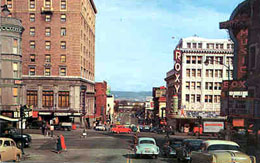On March 1, 1954, the Tacoma City Council approves installation of water meters for the first time in the 60-year history of the Water Department. The move, along with a 30 percent rate hike, is one of the new Public Utility Board’s first actions to keep the utility solvent. The rate hike draws little public interest, but the installation of water meters generates substantial protest.
When Tacoma purchased its water utility in 1893, customers paid a flat rate for all the water they cared to use. This tradition continued for decades and fostered a careless attitude among users. Residents let hoses run constantly and Tacoma households used four times the water used by households in other cities. In the 1930s, officials tried to have meters installed, but were blocked by public opinion.
In 1952, the state auditor found that the Tacoma Water Department's financial situation was "precarious" and that the flat water rate was "unscientific, outmoded and discriminatory" (Ott, 151). It was also tremendously wasteful.
On March 11, 1952, Tacoma voters approved a switch from the old mayor-commissioner system in which an elected commissioner ran the utilities, to a city manager system. The nine-member city council now appointed the Public Utilities Board, which in turn appointed the Director of Public Utilities.
On December 15, 1953, the Water Department held an informational meeting at Lincoln High School. Outraged water customers disrupted the meeting several times. The protests ranged from objecting to any discrimination among customers to having to pay for the convenience of future users.
The City Council followed the Utilities Board recommendations and appropriated $900,000 to install meters over a four-year period.

